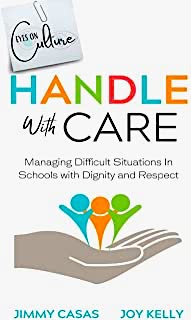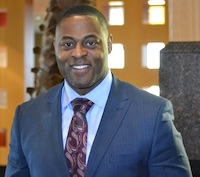 By Cathy Gassenheimer
By Cathy Gassenheimer
Executive Vice President
Alabama Best Practices Center
The compelling theme of the latest issue of Educational Leadership is compassionate discipline. This is one issue of ASCD’s monthly magazine that I heartily recommend every educator read.
 It’s apparent as you scan the titles of the many articles shared here (sadly, EL has dropped author names and one-sentence descriptors in their new layout) that this edition’s theme is influenced by the rising flood of SEL conversation taking place in education circles during our unprecedented pandemic experience.
It’s apparent as you scan the titles of the many articles shared here (sadly, EL has dropped author names and one-sentence descriptors in their new layout) that this edition’s theme is influenced by the rising flood of SEL conversation taking place in education circles during our unprecedented pandemic experience.
While I’d love to write a summary about every article and column in the issue, I selected four that I found particularly insightful to summarize. EL now allows non-members/subscribers free access to three articles a month of your own choosing. An annual digital subscription is $49 (and you get a lot!)
6 Steps to Help Kids Move “Upstairs”
Last year’s Powerful Conversations Network theme was social and emotional learning. We used the book Relationship, Responsibility, and Regulation by Souers with Hall as the guiding text. One of the key strategies that PCN members embraced was the concept of the Downstairs and Upstairs Brain.
When students—or adults—are calm and self-regulated, they are in their metaphorical Upstairs Brain. When circumstances cause emotions to surge, we often move to our Downstairs Brain, where we tend to over-react and lose some or all of our ability to reason.
In this short article, “6 Steps to Help a Distressed Student Move from Their Downstairs Brain to their Upstairs Brain,” educators from a PreK-5 school in Canada share a process that has worked with their teachers and staff to help students regain their ability to self-regulate.
- Scan for safety
- Stay calm
- Talk very little
- Offer food
- Provide something to tinker with
- Don’t rush
“Although we’ll never know all the triggers that cause a student to retreat to their basement,” principal Andrea Gutmann writes, “educators must understand the steps to help them climb out.”
Inclusive Discipline: An Interview with Carla Shalaby
Shalaby is the coordinator of social justice initiatives and community internships at the University of Michigan and the author of an influential book, Troublemakers: Lessons in Freedom from Young Children at School . She’s also a former director of teacher education programs at Brown University and Wellesley College – and public elementary school teacher..
In this EL interview, Shalaby begins by saying doesn’t like the term “classroom management,” feeling it holds the teacher at arm’s length from students and puts them in an enforcer role. She believes “We should see the teacher as a ‘community facilitator,’ working together with students in a shared space.”

According to Shalaby, too often teachers resort to punishing misbehaving students rather than taking a more proactive approach. She suggests beginning with remedies that help the student develop skills to be more productive and acknowledge and understand the harm that their behavior might have caused.
To successfully do this, classroom educators will need to shift away from a “judgment “ mindset and become curious about the child and the behavior, she tells interviewer Sarah McKibben.
“You would stop asking, ‘What can I do to fix this kid? And instead ask, ‘what do I know about them?’ ‘What do I need to know? What questions do I have about who they are? What questions do I have about how they feel day in and day out of my classroom space? What can I be curious about? What can I learn?’” (p. 18).
Teaching Students the Gift of Forgiveness
One thing teachers might “try instead” is found in another EL article – this one by Jimmy Casas and Joy Kelly – titled “The Gift of Forgiveness: Teaching Students How to Apologize and Forgive.”
 Casas and Kelly are the authors of Handle with Care: Managing Difficult Situations in Schools with Dignity and Respect, recently reviewed by ABPC’s Stoney Beavers.
Casas and Kelly are the authors of Handle with Care: Managing Difficult Situations in Schools with Dignity and Respect, recently reviewed by ABPC’s Stoney Beavers.
Helping students and adults recognize and acknowledge poor behavior is an important first step to successful apologies. Casas and Kelly suggest six steps to successful apologies:
- Making it right: Ask “How do you intend to repair this situation?” The authors recommend this step for both students and adults involved in the conflict.
- Responding with reason by listening to the emotion more than the words and listening to understand rather than to respond.
- Offer a safe space: This is not a location but rather involves creating the conditions to help the student feel safe, heard, and understood without feeling judged.
- Offer a path forward toward forgiveness: When someone apologizes, rather than simply respond “it’s okay,” the person to whom the apology is addressed should acknowledge the apology and suggest steps to move forward.
- Embrace the gift of forgiveness: The authors note that “when we genuinely accept an apology from someone, we are in fact forgiving them.” (p. 29)
- Give students a fresh start: Once the student has gone through these steps, give them a clean slate by helping them understand that the past behavior won’t be held against them and that they have a fresh start.
Fair Discipline in the Face of Widespread Trauma
In the article “After a Year of Trauma for All, How Can We Discipline More Fairly?” Robert Jackson advocates that teachers adopt a servanthood spirit, “giving of yourself to and for others, seeking to meet the needs of others, not your own.”
Jackson, a former teacher and author of Becoming the Educator They Need: Strategies, Mindsets, and Beliefs for Supporting Male Black and Latino Students, experienced trauma growing up as a Black student which he frankly describes. Instead of being supported by educators, he was most often reprimanded. “Instead of being affirmed, I was told that kids like me weren’t college material.”

Jackson’s servanthood spirit emerged as he began to use his own memories of trauma to help educators better understand all students. When addressing disruptions, he suggests a restorative justice strategy like the process discussed above: 1) What happened? 2) How did it happen? 3) What part did you play in it? 4) How were you affected by what you did? 5) Who else was affected by what you did? 6) What can you do to repair the harm? 7) What do you need to do to make it right?
Jackson offers several very helpful suggestions to educators who want to become more self-aware of their individual and team behavior during discipline situations. Here are three I’ve summarized:
Work on yourself: Jackson suggests that educators identify areas that could be strengthened when addressing discipline challenges. Facing and addressing those shortcomings can make one better prepared for the next challenge.
Check your biases: “Part of humbly serving others is understanding where you might have a bias or blind spot…A biased perception can become a self-fulfilling prophecy, and teachers’ discipline styles have been shown to differ based on a student’s race (Riddle & Sinclair, 2019).”
Be sure your messages reflect your intentions: Model the behavior you expect to see. Start each day positively using a saying, phrase, or affirmation. Explicitly tell your students you believe in them and show them your belief through your behavior. “Be consistent with that message, no matter what the circumstances.”
More Insights into Compassionate Discipline
This empowering issue of Educational Leadership includes many more articles detailing restorative justice, relational discipline, the impact of poverty on school behavior, and meeting the challenge of compassion in the everyday life of our schools. And, lest you think that adults aren’t covered in this issue, Jane Kise and Ann Holm offer strategies to discipline your own emotions. This month’s issue also features columns from favorite thought leaders like Doug Fisher and Nancy Frey, Elena Aguilar, Jim Knight, and Bryan Goodwin.
In short, you’ll receive a big return on your investment if you devote a couple of hours to exploring this resource-filled issue. And maybe the next time you face a discipline challenge, you’ll be better prepared to positively address it!
Resources:
►ASCD Interview with Robert Jackson on Disciplinary Practices to Support Students of Color
►In her MiddleWeb blog, My AP Life, Enterprise City assistant principal DeAnna Miller writes about the discipline challenges her school has faced in this year of teacher burnout and political strife – and how her own reading in EL’s “Compassionate Discipline” issue helped her “rediscover the best version of myself.”

0 Comments on "In Traumatic Times, EL Magazine Helps Us Explore ‘Compassionate Discipline’"